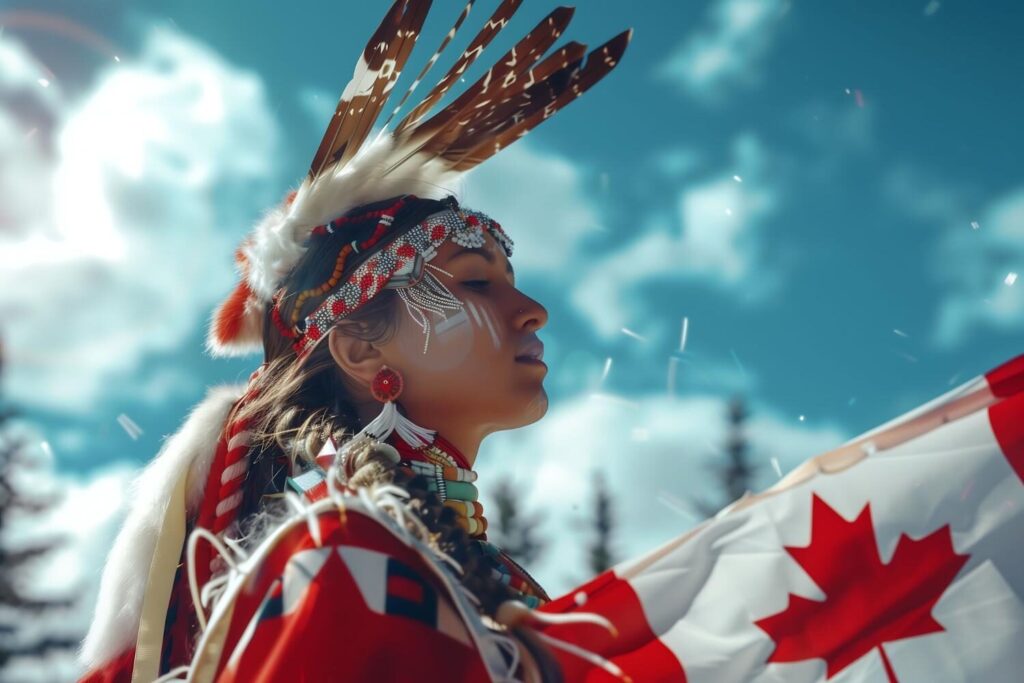
Canada’s gambling landscape varies from province to province and territory to territory, as each is responsible for regulating gambling within its borders. Because Canada has 13 provinces and territories, this has led to a patchwork of regulations in the gambling industry—a patchwork that extends to Indigenous communities and their gambling facilities.
There are over 100 land-based casinos in Canada and a growing number of online operators; of these, just a small number are Indigenous-owned and -operated. Impacted by laws from the Criminal Code of Canada, the Indian Act, and provincial regulations, Indigenous communities have faced legal battles in operating their own gambling facilities—battles that are ongoing.
Origins: Bingo Halls and Community Gaming in the 1980s
For the majority of Canada’s history, most forms of gambling have been illegal, except for bingo halls, horse racing, and charitable gambling events (like raffles and lotteries). Despite this, games of chance like dice, sticks, and card games have long existed in the country, some brought over by Europeans when they arrived in North America, and others originated within Indigenous groups. These games, in many ways, were community cornerstones that created social outlets and provided entertainment.
In the late 1900s, the legality of gambling underwent a massive transformation. The Criminal Code of Canada was amended, allowing provinces to regulate gambling as they see fit.
Legal Milestones and the Fight for Sovereignty
1985 – Criminal Code of Canada Amendment
The first significant turning point in the history of casinos in Canada came in 1985 with the amendment of the country’s Criminal Code. The amendment saw gambling decriminalized under this code and handed regulatory power over to each province. While this spelled opportunity in the country, the amendment did not involve consultation with the country’s Indigenous peoples and left the power of regulating gambling activities on reserves up to each province, even though these areas of land do not legally belong to these provinces.
1996 – The Kahnawà:ke Gaming Law
The 1985 amendment saw the rapid licensing of casinos in Canada, including on Indigenous reserves. Today, there are 18 land-based Indigenous-owned and -operated casinos in Canada. However, Quebec was unwilling to share gambling revenue with the Mohawk Council of Kahnawà:ke, leading the community to take action to create the 1996 Kahnawà:ke Gaming Law and with it, the Kahnawà:ke Gaming Commission (KGC). The law allowed the Kahnawà:ke community to regulate its own gambling activities. In 1999, the KGC became one of the first regulatory bodies to regulate online gambling.
2019 to Present – Bill S-268
While the physical footprint of 18 gambling facilities may at first glance point to a large share of the gambling industry in Indigenous hands, Indigenous communities are largely on the sidelines of the industry due to federal and provincial laws and regulations. Ongoing advocacy is taking place through lobbying for Bill S-268 to amend the Criminal Code and the Indian Act.
The goal of Bill S-268 is for Indigenous communities to have the freedom to operate and regulate gambling without having to rely on provinces to issue licenses, allowing them to benefit from this lucrative industry the same way provinces do and following a similar path to the KGC. Funding from having complete control of gambling activities on reserves holds the potential to significantly support community infrastructure, education, and other social initiatives in these generally underfunded areas.
Cultural Motivations Behind Indigenous Gaming
Like many cultures, gambling has been a traditional activity in Indigenous communities, with the games serving as ways to cultivate community. That said, Indigenous attitudes toward gambling have become increasingly polarized. Some feel that gambling’s harms outweigh its benefits, while others think that, in moderation, it’s an acceptable form of entertainment. The traditional connection, attitudes, and potential economic benefits come together to create a motivation to establish Indigenous-owned and -operated facilities.
Another factor motivating their development is that many Indigenous casinos have become cultural spaces where communities can share their art, architecture, histories, and events with visitors. The sites become cultural tourism draws that support communities in myriad ways, including boosting local patronage of other community businesses.
The Rise of Resort-Style Indigenous Casinos
In the 1990s and into the 2000s, a new trend emerged among casinos: casino resorts that became standalone destinations. These casino resorts offer classic gambling experiences while also offering amenities like suites, spas, pools, golf courses, restaurants, and more. By providing these features to guests, casinos are not only appealing to people who like to gamble but are expanding their customer base to reach a broader audience.
Casino resorts have been adopted across Canada, and when it comes to Indigenous-run casino resorts, they play a key role in generating millions in gambling revenue for their communities and the provinces they’re located in.
Economic Impact on Indigenous Communities
By creating destinations and cultural tourism hubs, Indigenous communities have leveraged the popularity of gambling to generate millions of dollars to support their communities—the Saskatchewan Indian Gaming Authority (SIGA) alone generated $378 million in the 2024–25 fiscal year. The revenue is reinvested into communities supporting education, healthcare, housing, and job creation. Of course, these wins aren’t without challenges.
There are still many who have strong opinions against gambling and its ill effects, with problem gambling a considerable concern. And there are still many provincial and federal regulations that create constraints on operations and use of revenue, making it difficult for communities to exercise sovereignty over gaming activities and their effects. These are challenges that shouldn’t be overlooked as the history of Indigenous casinos continues to unfold.
The best Canadian casinos online and in-person have developed over decades, having moved through legal restrictions and staying current with new technologies and trends. This evolution has been influential in shaping Canada’s gaming landscape, and for Indigenous casinos, there have been additional hurdles and concerns to address—and to continue addressing.
